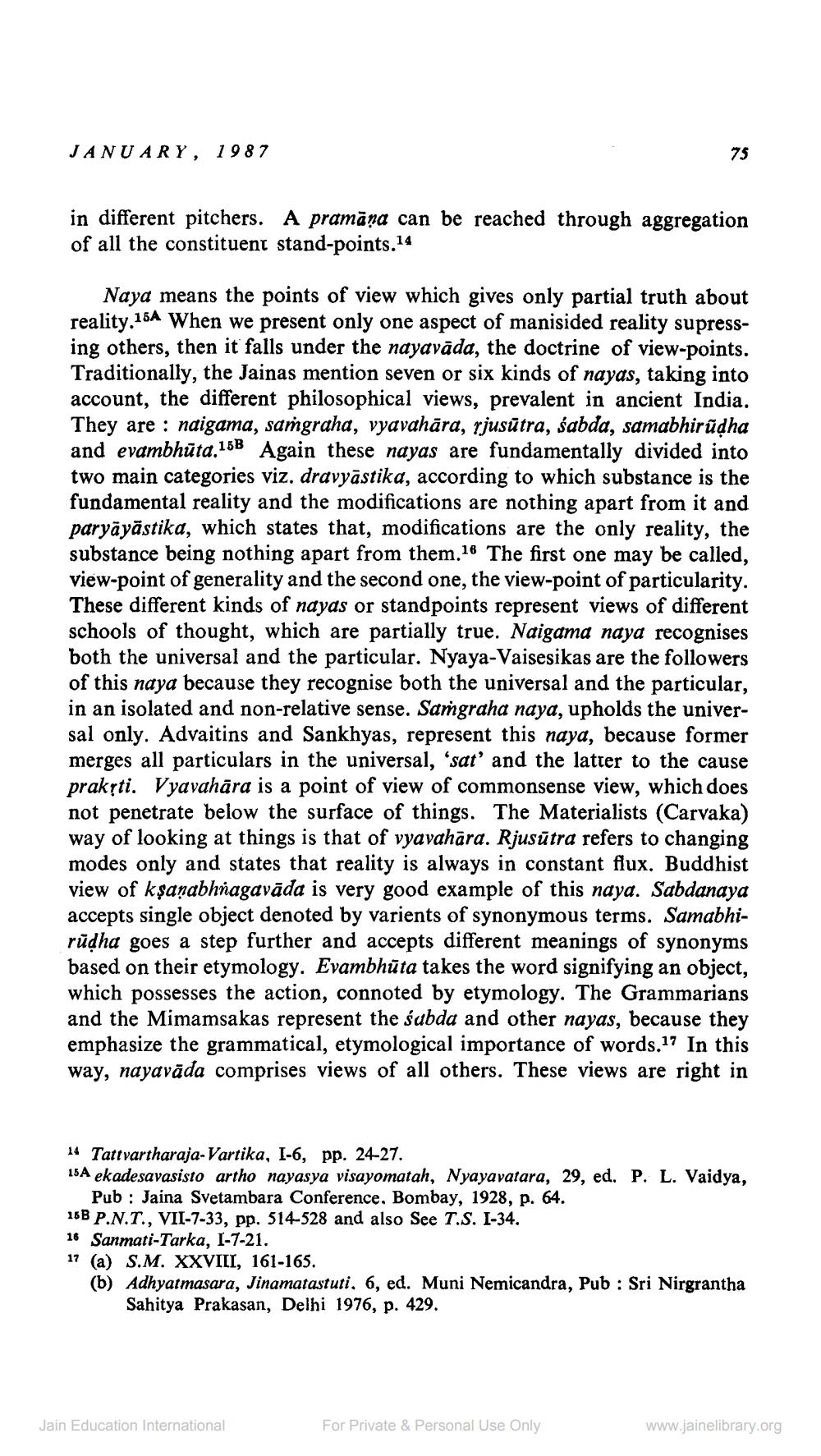________________
JANUARY, 1987
in different pitchers. A pramāna can be reached through aggregation of all the constituent stand-points.14
75
Naya means the points of view which gives only partial truth about reality.15A When we present only one aspect of manisided reality supressing others, then it falls under the nayavāda, the doctrine of view-points. Traditionally, the Jainas mention seven or six kinds of nayas, taking into account, the different philosophical views, prevalent in ancient India. They are: naigama, saṁgraha, vyavahāra, rjusūtra, śabda, samabhirũḍha and evambhūta.15B Again these nayas are fundamentally divided into two main categories viz. dravyāstika, according to which substance is the fundamental reality and the modifications are nothing apart from it and paryāyāstika, which states that, modifications are the only reality, the substance being nothing apart from them.16 The first one may be called, view-point of generality and the second one, the view-point of particularity. These different kinds of nayas or standpoints represent views of different schools of thought, which are partially true. Naigama naya recognises both the universal and the particular. Nyaya-Vaisesikas are the followers of this naya because they recognise both the universal and the particular, in an isolated and non-relative sense. Samgraha naya, upholds the universal only. Advaitins and Sankhyas, represent this naya, because former merges all particulars in the universal, 'sat' and the latter to the cause prakṛti. Vyavahāra is a point of view of commonsense view, which does not penetrate below the surface of things. The Materialists (Carvaka) way of looking at things is that of vyavahāra. Rjusūtra refers to changing modes only and states that reality is always in constant flux. Buddhist view of kṣaṇabhnagavāda is very good example of this naya. Sabdanaya accepts single object denoted by varients of synonymous terms. Samabhirūḍha goes a step further and accepts different meanings of synonyms based on their etymology. Evambhūta takes the word signifying an object, which possesses the action, connoted by etymology. The Grammarians and the Mimamsakas represent the subda and other nayas, because they emphasize the grammatical, etymological importance of words.17 In this way, nayavada comprises views of all others. These views are right in
14 Tattvartharaja-Vartika, I-6, pp. 24-27.
15A ekadesavasisto artho nayasya visayomatah, Nyayavatara, 29, ed. P. L. Vaidya, Pub Jaina Svetambara Conference. Bombay, 1928, p. 64.
16B P.N.T., VII-7-33, pp. 514-528 and also See T.S. I-34.
16 Sanmati-Tarka, I-7-21.
17 (a) S.M. XXVIII, 161-165.
(b) Adhyatmasara, Jinamatastuti. 6, ed. Muni Nemicandra, Pub: Sri Nirgrantha Sahitya Prakasan, Delhi 1976, p. 429.
Jain Education International
For Private & Personal Use Only
www.jainelibrary.org




